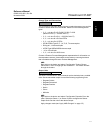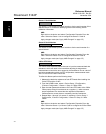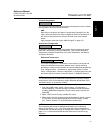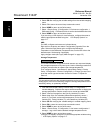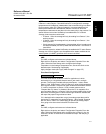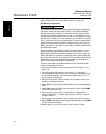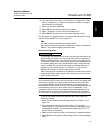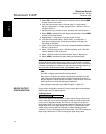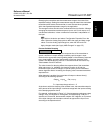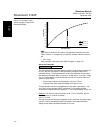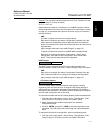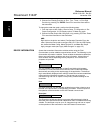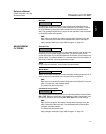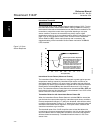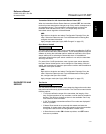
Reference Manual
00809-0100-4021, Rev DA
November 2004
3-15
Rosemount 3144P
HART
Reranging the transmitter sets the measurement range to the limits of the
expected readings. Setting the measurement range to these limits maximizes
transmitter performance; the transmitter is most accurate when operated
within the expected temperature range for the application.
The rerange functions should not be confused with the trim function. Although
reranging the transmitter matches a sensor input to a 4-20 mA output, as in
conventional calibration, it does not affect the transmitter’s interpretation of
the input.
AMS
Right click on the device and select “Configuration Properties” from the
menu. Select the Analog Output tab to define the upper and lower range
values. From the Analog Input Range box, enter the URV and LRV.
Apply changes made (see “Apply AMS Changes” on page 3-5).
Process Variable Damping
The PV Damp command changes the response time of the transmitter to
smooth variations in output readings caused by rapid changes in input.
Determine the appropriate damping setting based on the necessary response
time, signal stability, and other requirements of the loop dynamics of the
system. The default damping value is 5.0 seconds and can be reset to any
value between 0 and 32 seconds.
The value chosen for damping affects the response time of the transmitter.
When set to zero (i.e., disabled), the damping function is off and the
transmitter output reacts to changes in input as quickly as the intermittent
sensor algorithm allows. Increasing the damping value increases transmitter
response time.
When damping is enabled, the transmitter will output a value at time (t)
according to the following equation:
Output
(t)
= Input
(ts)
– De
(–t/damping)
D = input step change at time t = 0
At the time to which the damping time constant is set, the transmitter output is
at 63 percent of the input change; it continues to approach the input according
to the damping equation above.
For example, as illustrated in Figure 3-2, if the temperature undergoes a step
change—from 100 degrees to 110 degrees, and the damping is set to 5.0
seconds, at 5.0 seconds, the transmitter outputs 106.3 degrees, or 63 percent
of the input change, and the output continues to approach the input curve
according to the equation above.
HART Fast Keys 1, 3, 4, 1, 3



